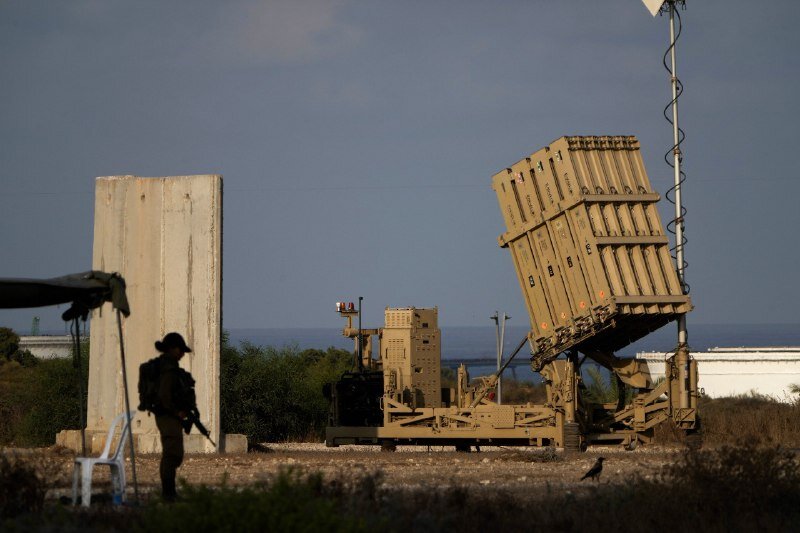How credible are claims of an impenetrable Israeli defense shield?
By Mona Hojat Ansari

TEHRAN - Iran carried out what some analysts have named “the biggest drone attack of history” against the occupied territories on Saturday and in the early hours of Sunday.
The move came in response to Israel’s April 1 strike on the Iranian embassy in Damascus, which resulted in the deaths of 13 people including a high-ranking military official and his deputy.
While the world’s mainstream media as well as Israel’s TV channels initially covered the attack with disbelief and horror, once the dust had settled and it was clear that Iran’s operation had come to an end, they shifted the narrative to downplay the impact of Tehran’s move. The Iranian drones and missiles that had lit up the sky all across the occupied territories suddenly became rudimentary weapons and Israel’s defense capabilities were hailed as impervious.
Weapons and equipment used by both sides during the attack
Israel's defense shield consists of three layers: The Iron Dome, David’s sling, and the Arrow Missile Defense System. They are respectively designed to intercept short-range rockets and artillery shells, medium-range missiles and rockets, and long-range ballistic missiles outside the atmosphere.
The activation of these layers can occur separately or in combination, based on the Israeli military’s assessment. The night of Iran’s attack, all three layers were at work.
Apart from Israel’s own defense capabilities which are touted as the most advanced in the world, the U.S., UK, France, and Jordan also came to the regime’s rescue by reportedly intercepting a number of the Iranian projectiles. Reports show that Israel alone has spent a total of 1.35 billion dollars to counter Iran’s offensive.
The specific armaments employed by Iranian forces in the attack have not been officially revealed. Nevertheless, experts and news organizations have scrutinized the footage of the aerial devices to ascertain the weaponry utilized during the operation.
Iran allegedly used older or at best moderately advanced weapons to attack Israel. The country is believed to have used its Shahed-136 drones, along with 2nd or 3rd-generation missiles, like Paveh, Emad, and Rezvan. The most sophisticated armaments fired are thought to be Sejjil ballistic missiles. Iran has so far announced the development of 5 generations of missiles, including hypersonic variants. The Shahed-136 drones are also not considered to be top-tier in Tehran's vast and varied arsenal of UAVs.
It is estimated that the country spent approximately $27.4 million to carry out Operation Truthful Promise.
Which projectiles hit the targets?
Israel’s military spokesman has claimed that 99% of what was fired at Israel was successfully intercepted. Again, Iran has not disclosed the number of drones or missiles it launched at the occupied territories, but the overall number is believed to be around 300, which means that based on the regime’s pronouncement, only 3 projectiles are supposed to have hit the ground.
These claims were soon challenged by online videos recorded during the attack. The footage at hand suggests several more than three missiles or drones have been able to strike the targets.
Washington also seems to have rejected the Israeli assertion. ABC News quoted a senior American official as saying that at least nine Iranian missiles managed to penetrate Israeli air defenses and hit two military targets. Five ballistic missiles reportedly hit the Nevatim Air Base, causing damage to a C-130 transport plane, a runway, and storage facilities while four others hit the Negev Air Base.
Iran has only declared to have successfully destroyed the military bases it had targeted, which it said were used to attack the Iranian embassy in Damascus on April 1.
Israel trying to calm the waters
“The regime's main media outlets have been echoing the same narrative as Israeli officials. It is understandable that they would not criticize their military and defense capabilities at a time like this. The recent events on October 7 and the regime's unsuccessful military offensive in Gaza have left Israelis shaken. Palestinian fighters penetrated the occupied territories, Hamas is nowhere near eradicated, and no Israeli hostages have been freed,” Ali Abdi, an expert on Israel and Palestine, told the Tehran Times.
While the extent of the damage and number of casualties is still a topic of debate, Iran is believed to have avoided making a highly destructive move. The country used inexpensive drones as a decoy and targeted a limited number of military bases with its less advanced missiles. Analysts suggest that Iran's goal was to send a clear message to Israel.
“Even within the regime's analytical circles, it is understood that Iran could have used more advanced weapons in larger quantities but chose a restrained response to bring Israel to its senses. Tehran is not seeking war but will make sure that its redlines are respected from now on,” Abdi added.

No comments:
Post a Comment